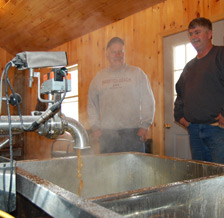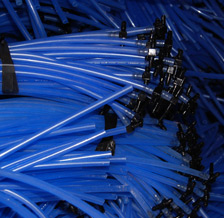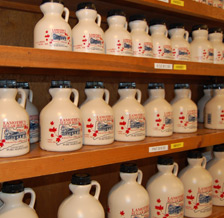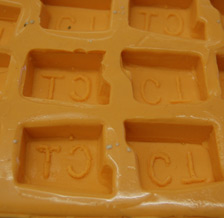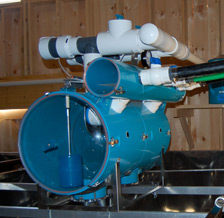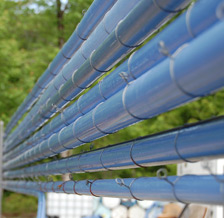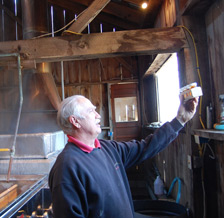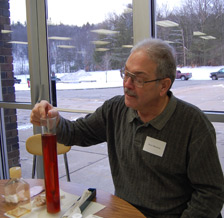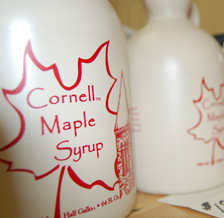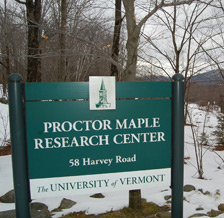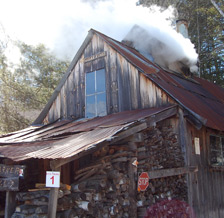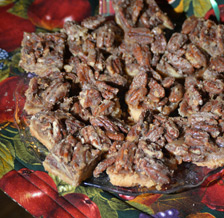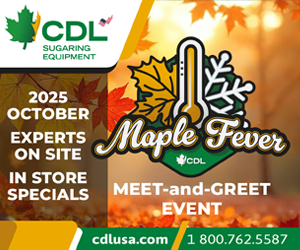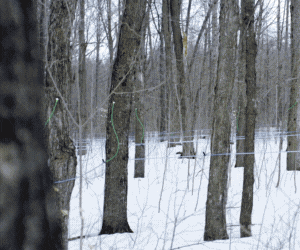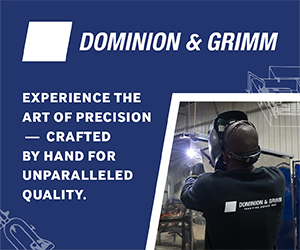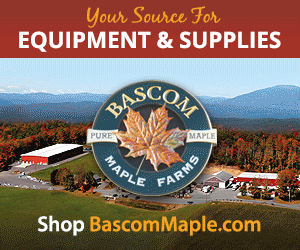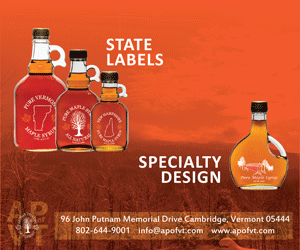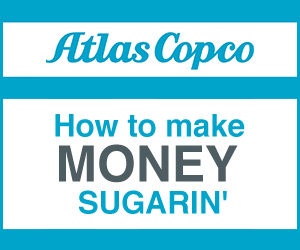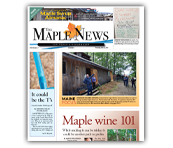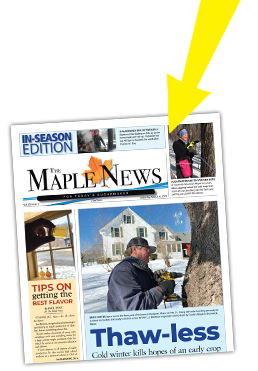BACK TO HOME
UVM Proctor Page
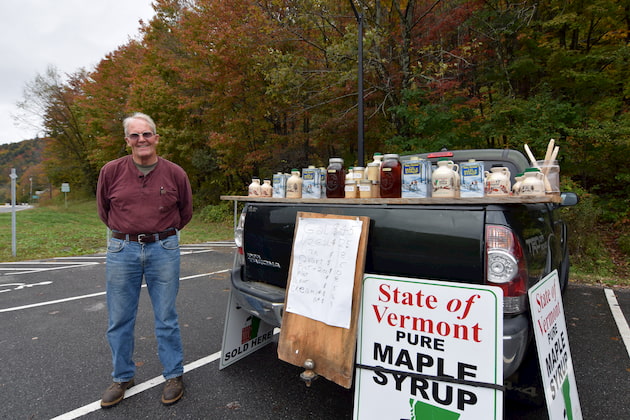
Price-Setting for maple sales
Mark Cannella | October 16, 2019
MORRISVILLE, Vt.—Prime-time maple retail season is picking up! It is time to welcome leaf peepers into our glorious northern woodlands, gear up for holiday sales and revisit price points for local demand.
I have worked with dozens of maple producers and retailers in recent years. Everyone wants to make more money and smart price-setting strategies are the key to meeting financial objectives.
It is common for people to scoff at a neighbor who apparently prices dooryard maple gallons too low. Who is selling syrup for $35 per gallon?
It is increasingly common for people to scoff at that new business selling pints online for $22+ in fancy glass bottles (aka expensive glass!). Whatever! Stop judging others and double-down on your own pricing strategy. [ MORE ]
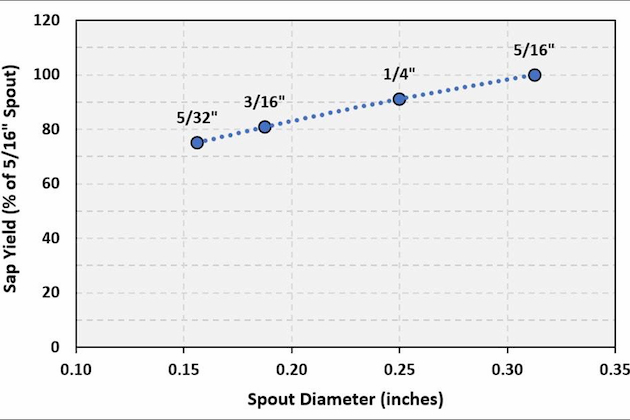
UVM Proctor Center examines effect of spout diameter on sap yield
T.D. Perkins & A.K. van den Berg UVM Proctor Maple Research Center | August 29, 2019
UNDERHILL CENTER, Vt.—In order to determine the optimal approach to sap collection in their operation, maple producers need to be informed about how the choices they make will affect sap yield.
One of the decisions they face is what spout size (diameter) to use.
Average sap yields from tapholes of different diameters as a percentage of yields from 5/16”-diameter (control) tapholes. [ MORE ]
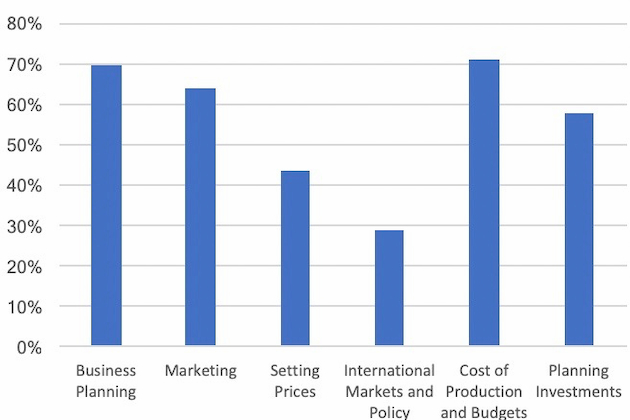
Maple producers doing more business planning
Mark Cannella, University of Vermont Extension | June 5, 2019
MORRISVILLE, Vt.—Maple operators are talking more and more about business each year.
The number of participants at business workshops has doubled or tripled at most winter maple conferences between 2014 and 2019.
A combination of public comments at these sessions and private discussions has revealed many reasons why maple operators are paying more attention to business planning.
Three major themes stand out from my interactions with producers and sellers: finances, marketing and collaboration.
Finances and profitability goals are top of mind.
New and expanding enterprises remain optimistic and opportunistic. Investment continues and the large expense forces owners to maintain cash flow and strive for a long-term return.
A recent lag in bulk prices is forcing many managers to reassess their cost of production and adapt to sub $2.30 per pound bulk markets.
Strong marketing plans strengthen the business. Sellers at all levels are feeling competition and working hard to distinguish their quality, products and brands.
Bulk producers are seeking premiums for certified organic syrup. [ MORE ]
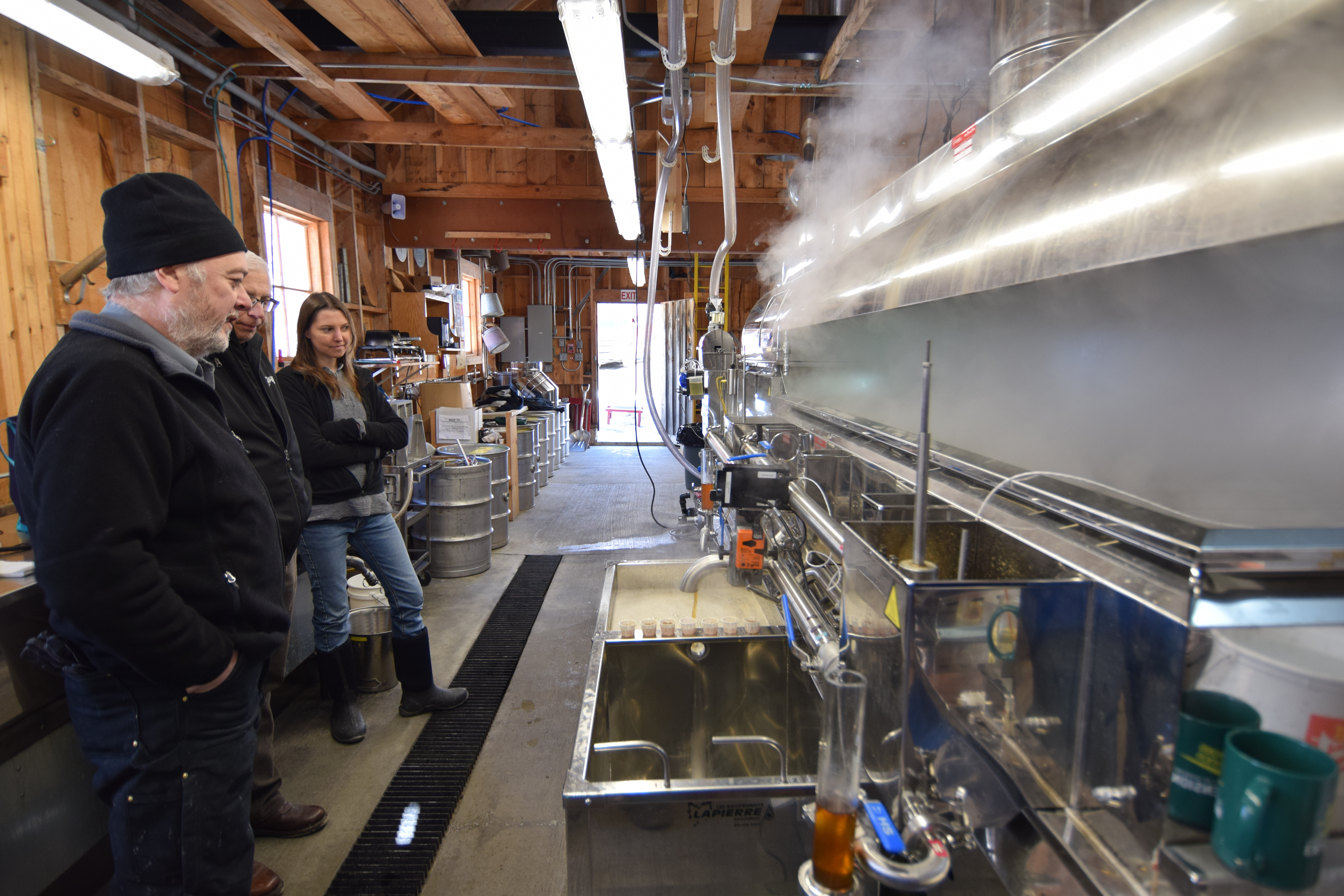
Proctor Center continues with innovations
Jeff Wakefield | September 10, 2018
UNDERHILL CTR., Vt.—Like most sugarmakers, Brian Stowe was used to working without a break from the start of the maple sugaring season in early spring to its bitter end in mid- to late April.
“If you had dental or medical issues, taxes, anything – all that had to be done before or after; during the season, you’re committed, 24/7,” says Stowe, sugarhouse operations manager at the University of Vermont’s Proctor Maple Research Center.
But after 28 sugaring seasons at the Proctor, Stowe encountered something new this year: weekends off.
Stowe owed his newfound down time to a combination of state-of-the-art new and cleverly re-purposed old technology at the Proctor sugarhouse, a model facility for the maple industry. If the innovations catch on as past improvements have, the Proctor’s innovations could make sugar-making a vastly more humane, and profitable, enterprise in the future.
What first greets a visitor to the sugarhouse, a peaked two-story structure tucked in a grove of maples down the road from the Proctor’s main research facility in Underhill, is a sea of steel barrels just inside the door that contain the operation’s output for the year: 3,000 gallons of maple syrup, a record crop.
But it isn’t the quantity of maple syrup that made 2018 such a banner year, says Tim Perkins, a research professor in UVM’s Plant Biology Department who is the Proctor’s director. It was the greatly reduced time it took to produce it – an improvement that was responsible for Stowe’s more forgiving schedule.
“In the past we made about 20 gallons of syrup for every hour of sugarhouse time,” Perkins says. “This year we produced 42 gallons of syrup for every hour,” a 110 percent improvement.
[ MORE ]
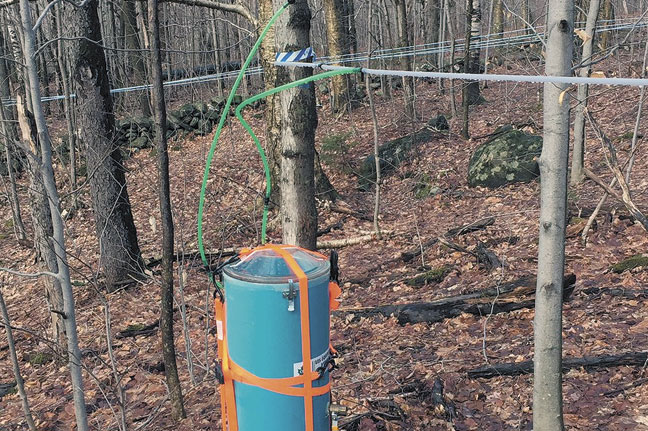
Understanding the relationship between tree size and yield
Timothy Perkins, Mark Isselhardt, Abby van den Berg | UVM Proctor Maple Research Center and UVM Maple Extension, University of Vermont Underhill Ctr., Vermont | Feb. 5, 2018
There are several important factors that affect the yield of sap from trees during the production season.
These generally fall into four categories: tree characteristics, tapping, vacuum, and spout/tubing sanitation.
On tubing, it is sometimes difficult to observe the impacts each of these has on sap yield, by doing controlled research studies it is possible to discern the relationships among certain characteristics and practices.
In fact, some of the common sayings in the maple industry such as “strive for five, no more than ten” and “5% more sap for each 1” Hg vacuum” come directly from such research.
One relationship that is sometimes overlooked is the one between tree size and yield. [ MORE ]
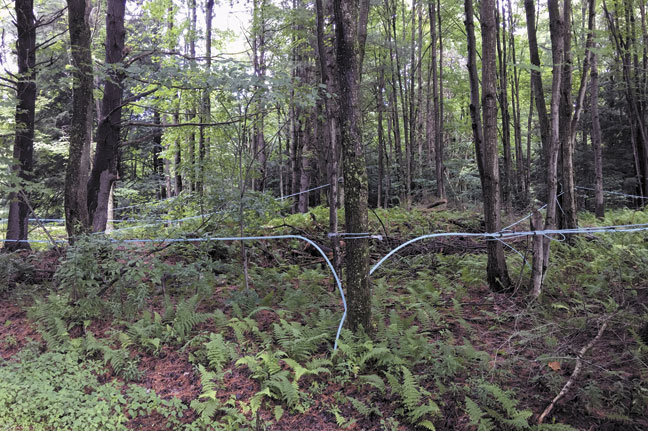
A snapshot of sugarbush lease rates in Vermont
Mark L. Isselhardt, Maple Specialist | Oct. 6, 2017
Many sugar makers in Vermont own the land on which their trees grow. The land may have been passed down through several generations of family ownership or recently purchased on the open market. Sometimes however, producers will pay landowners for the right to tap trees. Whatever the reason, sugar makers and landowners who decide to enter into an agreement, at a minimum, they must agree on a price and terms before tapping can begin. This is just the beginning however as both landowner and producer need to consider several things before an agreement can be reached. Determining length of lease, minimum tree diameter to be tapped, when payment is made as well as determining what restrictions related other activities (thinning, retubing, road maintenance, etc.) needs to be done before an agreement can be finalized. These and other details should be carefully considered and written into a signed lease agreement. This article will focus on just one part of establishing a lease agreement; a snapshot of the current $/tap for lease agreements statewide. [ MORE ]
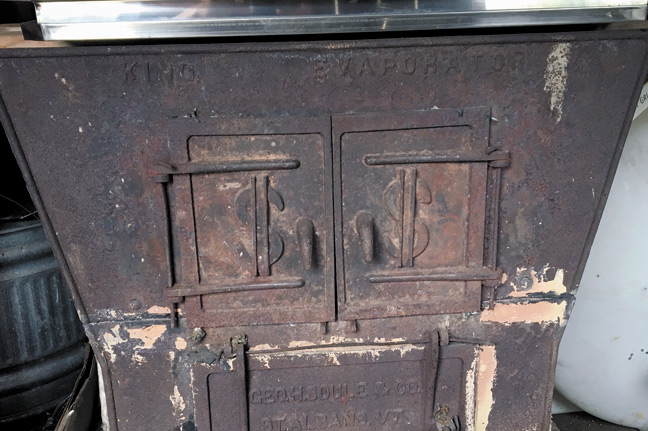
Are you watching your profits evaporate?
Mark Cannella | May 2017
Maple sugaring in 2015 was not as profitable as 2014. The record crop in 2016 was able to stabilize overall financial performance but on a pound for pound basis the 2016 profit margins were still down as market prices slipped. [ MORE ]
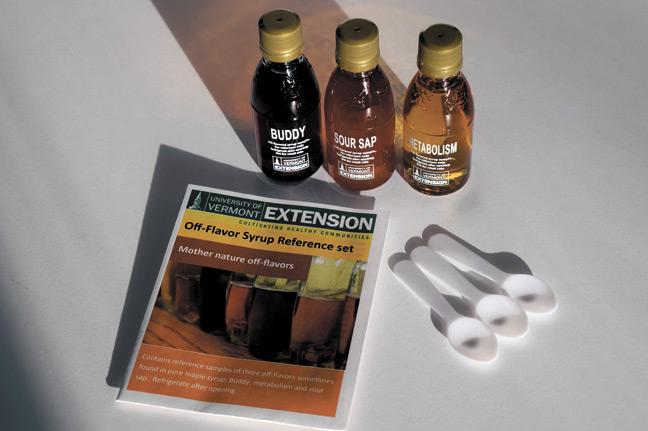
Off-flavor syrup reference available
Mark L. Isselhardt, Maple Specialist University of Vermont Extension Proctor Maple Research Center | February 2017
A new product to help producers identify off-flavors in maple syrup is available for the 2017 production season.
The product, officially known as the Off-flavor syrup reference set, was developed by the University of Vermont Extension Maple Program. The kits are intended for anyone who works with pure maple syrup, especially those who are responsible for grading pure syrup and are using flavor terminology common to U.S. producers. [ MORE ]

